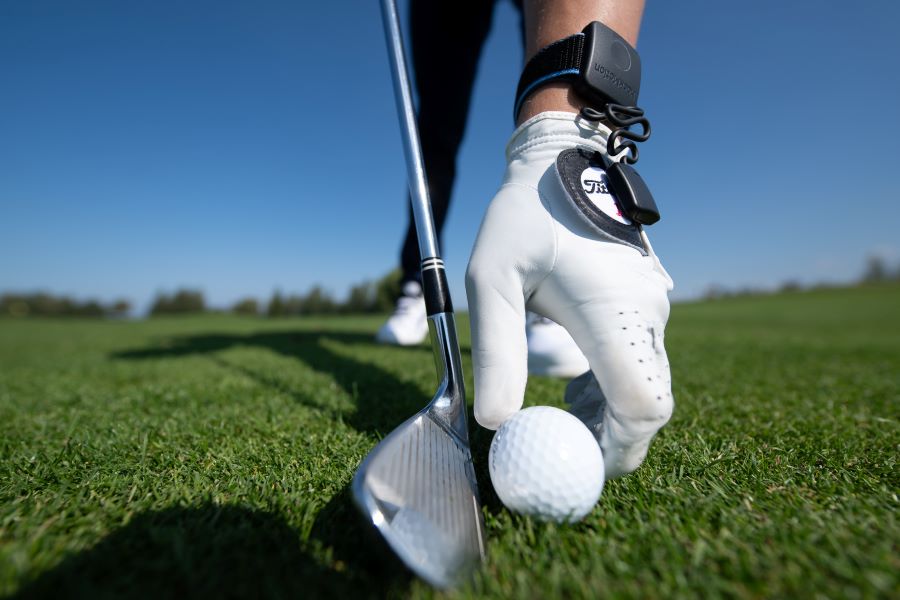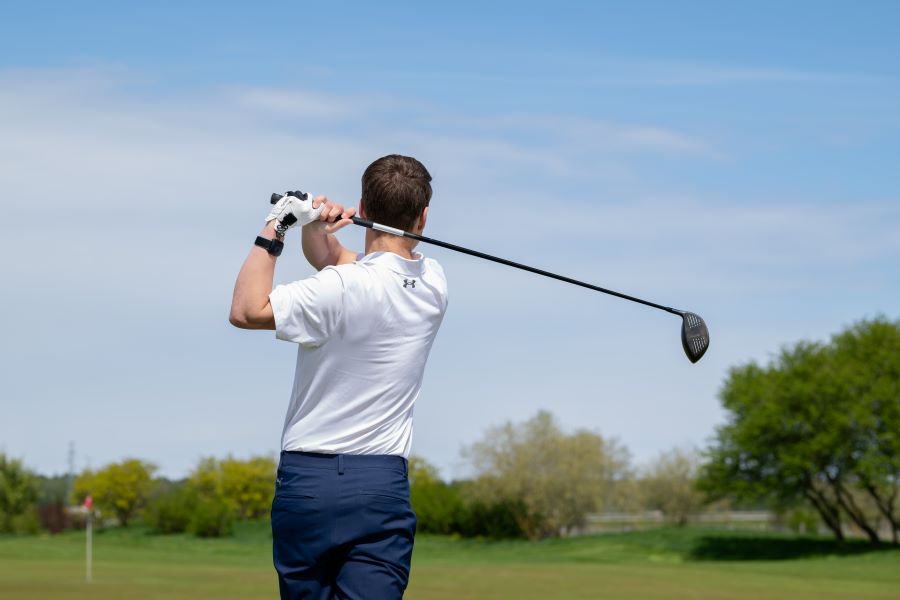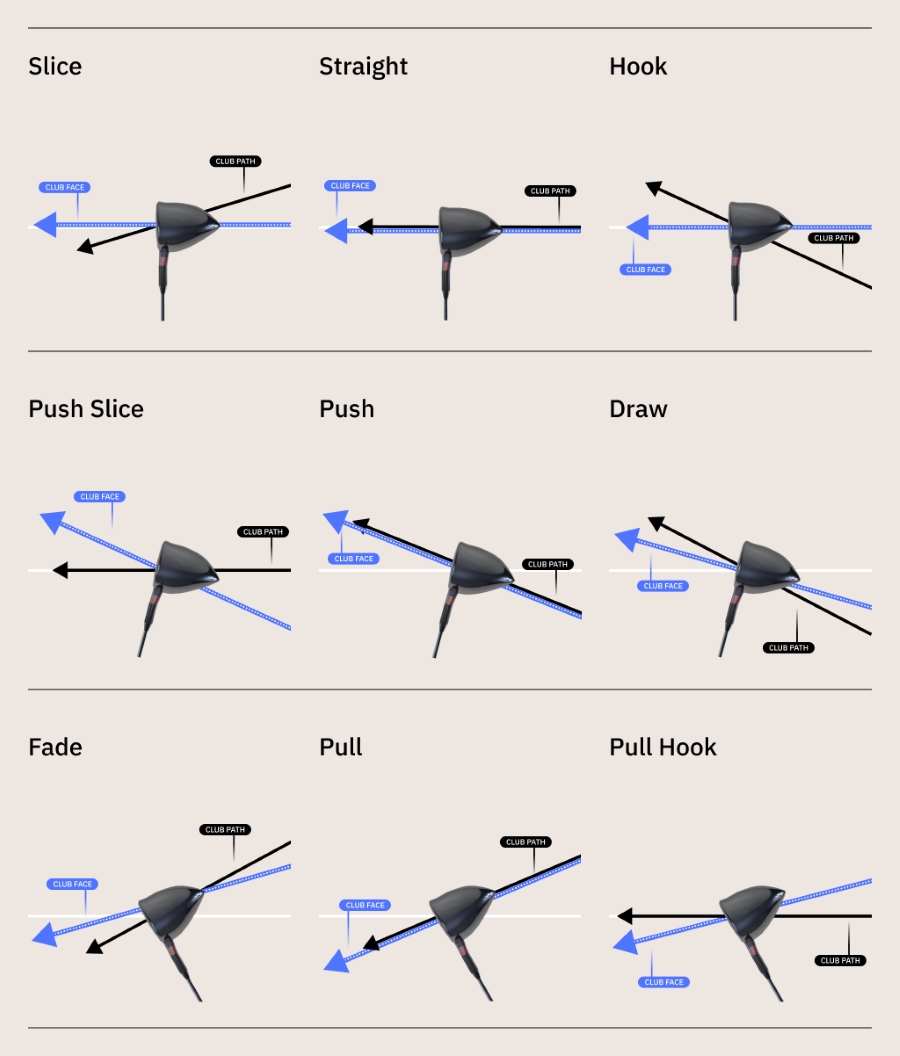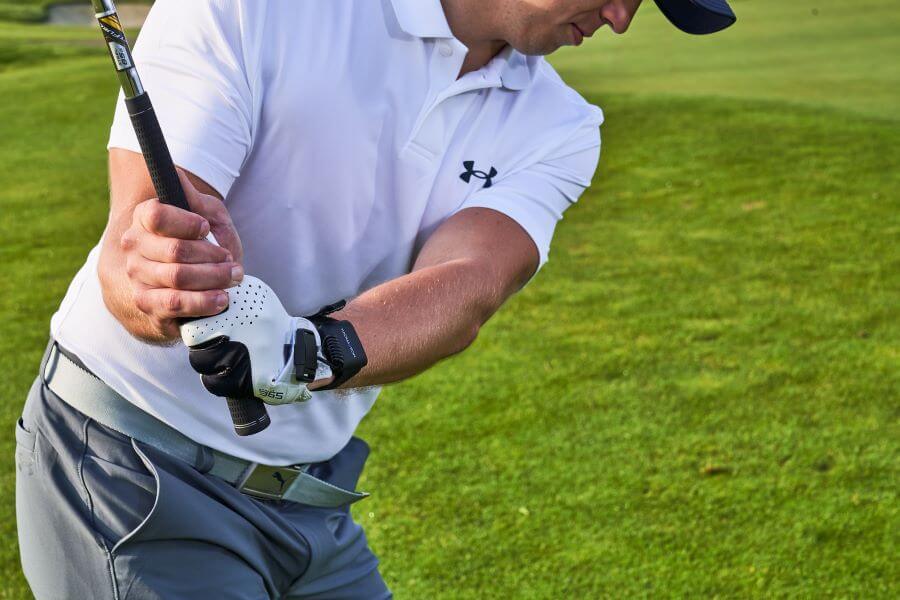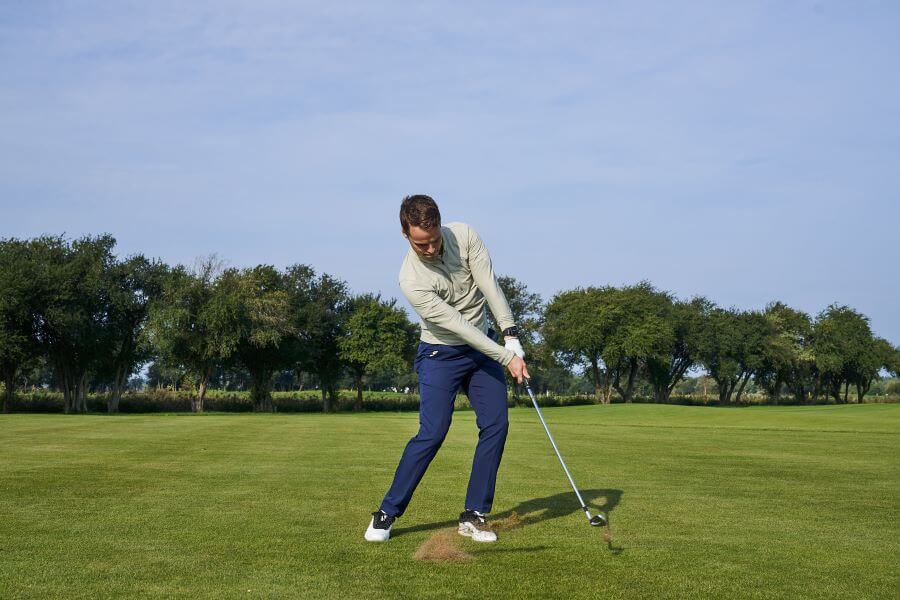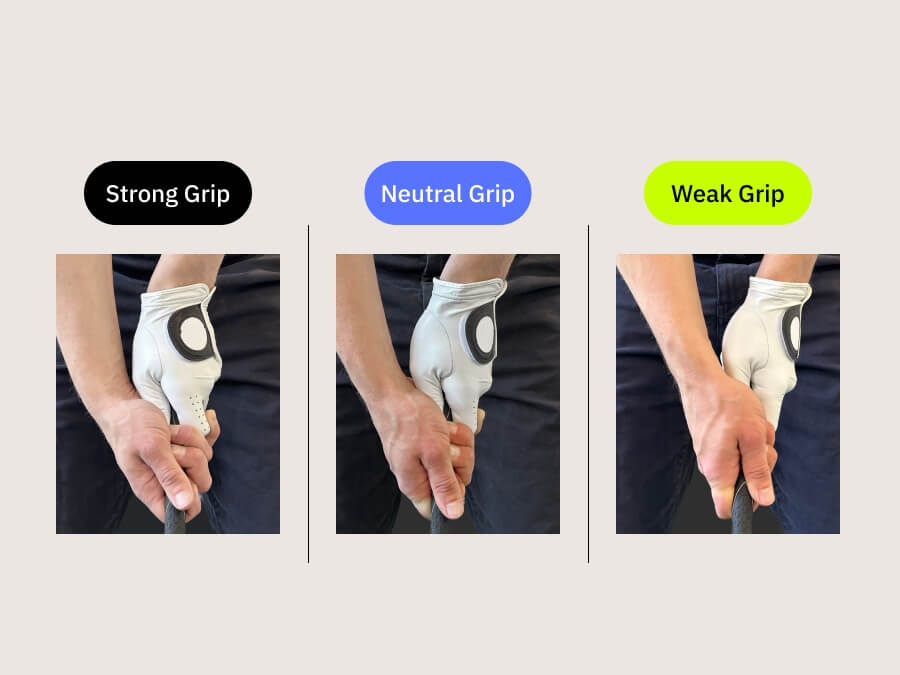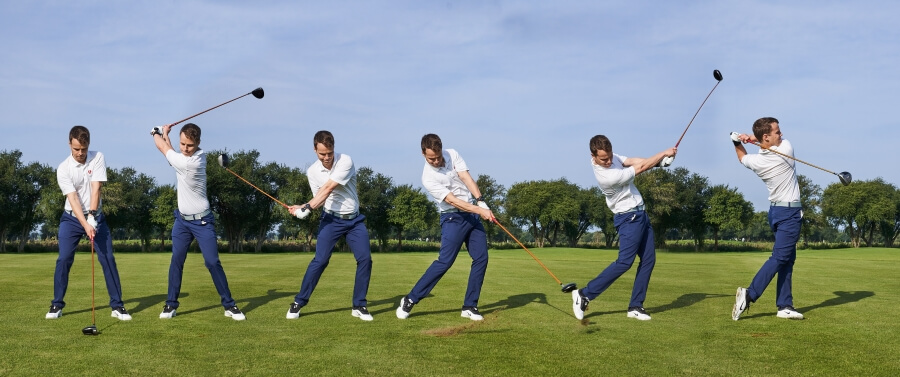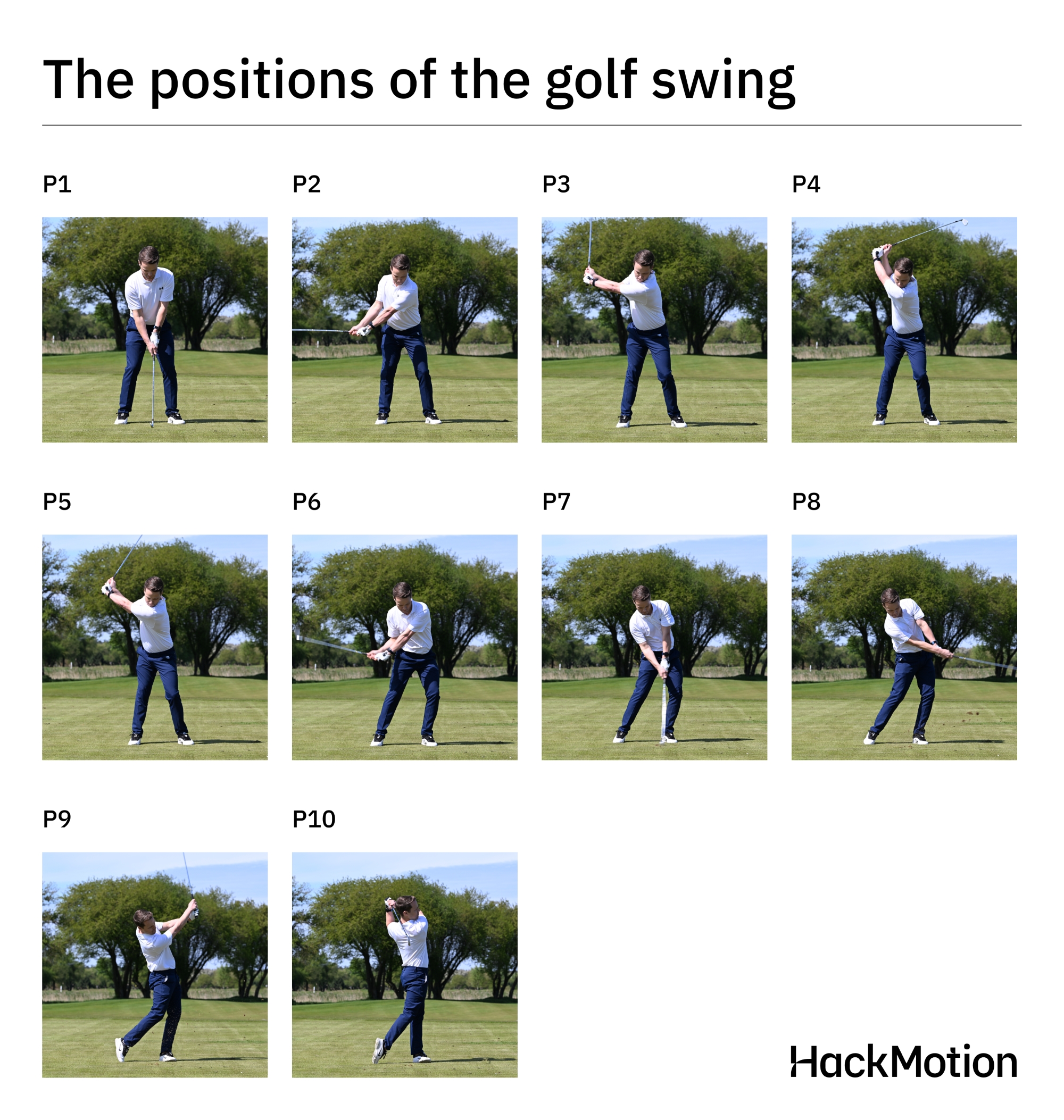Learn How to Hit a Low Golf Shot to Stay Out of The Wind
Learning how to hit a low golf shot has saved me innumerable strokes on the course, as I can escape trouble and keep the ball out of the wind.
In this post, I teach you how to hit a low golf shot to help you recover from woods and maximize distance and accuracy in the breeze.
Our 9-step plan teaches the importance of taking an extra club, placing the ball back in your stance, and shortening your swing. In addition, you’ll learn why wrist flexion is integral to delofting and closing the clubface at impact for a lower-launching golf shot.
How to Hit a Low Golf Shot Into the Wind? (In Short)
- Take an extra club to mitigate your shorter, slower swing.
- Ball back in your stance to encourage striking it with a delofted clubface.
- Choke down on the club to boost your control of the clubface.
- Forward shaft lean at address promotes a closed clubface at impact.
- Shorten your swing to reduce velocity and spin.
- Increase wrist flexion at impact to deloft the clubface and prompt a low flight.
- Accelerate through impact to prevent the ball from lifting off the clubface.
Contents
When Should I Hit a Low Golf Shot?
The best time to hit a low golf shot is into oncoming wind or when hanging branches lie in your way. A low golf shot allows you to escape trouble or keep your ball out of the wind, resulting in optimal distance considering your lie and the obstacles you will contend with.
Who Should Learn How to Hit a Low Golf Shot?
Every golfer from scratch through to a 36 handicapper should learn how to hit a lower golf shot. The quicker you learn to play the shot, the easier it becomes for you to escape trouble, get back in play and continue your round.
In my experience, a low shot has saved me numerous strokes in gale-force winds. Although it doesn’t produce the yardage of a full strike in clear conditions, it helps me achieve satisfactory results in the breeze that at least keeps me in contention.
The 9 Tips for the Perfect Low Golf Shot
1. Take an Extra Club
The first step towards hitting a low golf shot is to take more club than usual for two reasons.
Firstly, a longer club carries a stronger loft, which will aid your cause in keeping the ball out of the wind or under tree branches.
Secondly, you’ll produce a slower swing and ball speed because of a shorter, deliberate swing, which I’ll delve into later. The lower lofted club provides sufficient power to help you clear the thick grass to reach the fairway or gain adequate distance in the wind.
I’ll offer a simple example to give context to taking an extra club. If you plan on hitting the ball 120 yards to reach a favorable position, you may typically hit a 9-iron, but an 8 or 7-iron may play better for a low shot.
2. Ball Back in Your Stance
Next, when I am hitting a stinger, I place the ball one ball back in my stance than usual. This position prepares me to strike the golf ball with a delofted clubface, prompting a lower launching shot.
When I set the ball up too far forward, the leading edge tends to prop open prior to impact, resulting in a towering launch.
3. Position More Weight on Lead Leg
When I prepare to hit a low golf shot, I like to position 55% to 60% of my weight on my lead leg. This encourages forward shaft tilt and a delofted clubface when it strikes my golf ball, delivering the intended low launch.
I find myself exposed to leaning back slightly and getting the clubface under the ball if I set up with my weight evenly positioned. As a result, this sends my ball higher than intended, leaving it at risk of striking trees or drifting in the breeze.
4. Choke Down on The Club
Step 3 is optional, but I find it works for easy punch shots where I’m merely trying to punch back into play. However, you may notice that choking down on your club works on full strikes too, since it’s designed to improve your control of the clubface.
By choking down on the club, I can better guide my club to the ball and deliver a lofted angle for a low-launching shot. Admittedly, the shortened setup does cost me clubhead speed, which I’m content with since the aim is to strike the ball cleanly with a closed clubface and hit a low shot.
In addition, choking down on the club will restrict your ability to unload at the top, helping you reduce your backswing for improved control. You can see how legendary coach David Leadbetter grips down on a club and plays an easy punch shot in the below clip.
5. Forward Shaft Lean
Once I’ve gripped down on the club, I proceed to address my golf ball and set up with a forward shaft lean. This sees me place my hands ahead of the ball with the shaft leaning toward the target.
I induce forward shaft tilt at address to position myself for the intended strike with a delofted, closed clubface. It won’t guarantee a clean strike and low launch, but it gives you the feel of desired impact position to keep your ball low on lift-off.
Read More: How to Square Your Clubface.
6. Shorten Your Swing
Next, I follow the advice of LPGA Tour Pro Angel Yin when I need to shorten and slow my backswing. Although Yin provides one reason for reducing her backswing, I do it for 2, specific to my swing.
Like Yin, I find it works wonders in restricting my spin rate to bottom out my launch and flight.
However, I also find it incredibly useful for enhancing my control of the clubface on the downswing as it has less distance to travel, lowering the risk of heading off path.
7. Increase Wrist Flexion At Impact
Using the HackMotion wrist sensor, I’ve learned of my tendency to extend my wrists excessively before impact. This steepens my attack angle and causes the clubface to open, leading to a left-to-right shape and a ballooned launch.
Avoid this at all costs, and work on flexing or bowing your wrists before contact to shallow the shaft and close the clubface. Ideally, your wrists should carry greater flex than your setup position, where a small dose of extension is required.
A closed clubface delofts the golf club and enhances your ability to launch the ball low, avoiding wind and obstacles.
Finally, the HackMotion wrist angle training aid helps you optimize your positions from address through impact to deliver optimal clubface control, distance, and accuracy.
Read More: Wrist Action in the Golf Swing.

Improve your low golf shots by mastering wrist mechanics with our online guide.
8. Soften Your Arms
The next tip I borrowed from Tiger Woods, as I found it incredibly useful for launching the ball low on long shots into the wind. You soften your arms to help your hands stop as fast as possible after impact to start the ball on a shallow trajectory.
For softer arms to be effective, you need rapid hip rotation through impact to act as a breaking mechanism, which takes spin off the ball. I used this tip religiously, playing on a coastal course for 5 years, where I needed maximum control over my ball flight on most of my shots.
9. Stop Your Hands Rapidly Post Impact
Woods also suggests speeding up your hips through impact, which adds the second part to your breaking mechanism. As your hips accelerate through contact, it forces your hands around the body, stopping them lower than usual.
Halting your hands rapidly after contact prevents you from lifting the golf ball into the air and gaining excess height. Instead, you strike the golf ball with downward force, imparting reduced spin to produce a low-flying shot.
Although Tiger’s tips served me well in the wind-infested city of Cape Town for 5 years, I needed frequent visits to the chiropractor. It is not easy going on your lower back.
Summary
Now that you’ve learned to hit a low golf shot, take this 9-step plan and apply it to your practice regimen. Although not all tips may suit your swing or game, there are five non-negotiables that are essential to hitting a low stinger shot.
Always take extra club to promote less loft at impact and position your ball back in your stance to encourage contact with a closed delofted clubface. Next, choke down on the club and shorten your swing for greater clubface control.
Finally, induce wrist flexion leading into contact to close your clubface and promote a delofted angle to generate optimal, low ball flight. If you’re ready to improve your clubface control, distance, and accuracy, learn how HackMotion wrist training aid can enhance your performance.





